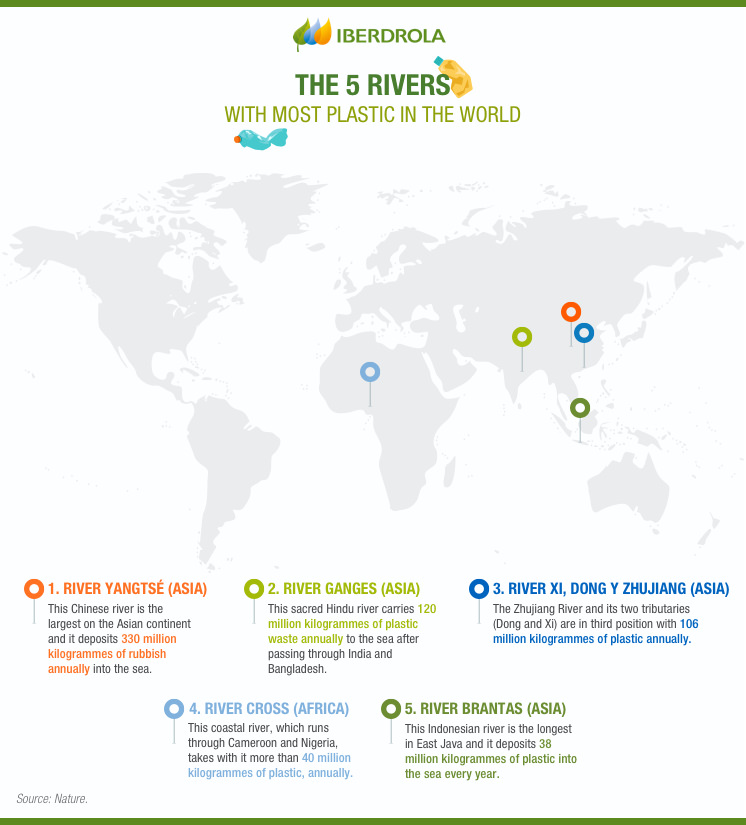This plastic-free July we’re trying to wrap our heads around how what we think we’re safely stowing in a big bag – or even in the recycling – somehow ends up a million miles away in the stomach of a dolphin. Turns out it’s easier to wrap a plastic bag around the Mariana Trench, though.
Surely coastal communities aren’t adding 8 million tons of waste to the drink every year by themselves – and whilst industrial fishing waste might make up most of the chunky bits, the latest report says it’s only 10% of the total pollution. Then there’s accidental loss at sea and other industry, but that leaves 80% coming from land.
We’ve obviously done a bit of research, but the main gist of this comes from the fact that we’re normal human beings who are doing our best in a world that seems, to all intents and purposes, against itself. Of course the amount of plastic knocking about in the first place is the start of the problem, but for the average consumer it’s pretty much unavoidable. How are we supposed to do our best when those who call the shots aren’t doing theirs?
Well, education is basically the first step for anything ever, so maybe this will help divert the guilt away from the little guys and in turn encourage the big guys to help us divert the path that the planet is going down.
So, step one:
- Pop everything that every human being ever needs to survive in a few layers of single-use plastic, and offer pretty much no alternative other than to live off the fat of the land as a mountain goat
- Make the single-use material something that never breaks down – or if it does, it just becomes smaller pieces of itself that are easier for marine life to consume (but not digest)
- Add plastics that are already tiny to things like beauty products, so that they’re ready and raring to be washed down the drain.

Step two:
- Don’t dispose of all your packaging properly – or if you do, watch it get poorly managed. The main routes that plastics go down to get to the ocean are:
- Via littering: plastic is lightweight, so once it’s out in the environment without being wrapped up in yet another layer of plastic to keep it with all the other waste, it can easily go walkabout. Once it’s found its way to a river, the only way is downstream from there, baby.
- Via bins: you’ve done the right thing by wandering around town with a takeaway cup for 3 hours to find the one (1) bin within a 40 mile radius, but soon it’s going to be overflowing because not enough money is invested into emptying it often enough. Then there’s a gust of wind, and that cup is essentially littering itself and we’re back to square one.
- Via landfill: a landfill is essentially just a big bin without a lid, and the UK is actually a pretty small island when you think about it, so more often than not those landfills are close to the sea. Again, Storm Gertrude or whoever comes blowing in and the fish are in trouble.
- Via drains: it’s not just microfibres from clothing, or microbeads from face scrub that make their way down the sink. We’re flushing all kinds of stuff from sanitary products to wet wipes, and more often than not they contain plastic. Their destination? Directly into the ocean, and probably where there are people bathing too.
Credit: Surfers Against Sewage
Step three:
- Realise that the world’s waterways are just one big funnel into the ocean, and unless Robson Green makes another million episodes of River Monsters in which he intercepts every disgusting thing before it makes it there, we’re in trouble.
According to Greenpeace, major rivers around the world carry an estimated 1.15-2.41 million tons of plastic into the sea every year – that’s up to 100,000 rubbish trucks. Without proper waste management of the waterways, there’s nowhere else for it to go. And it’s not like it’s not affecting aquatic life where it ebbs and flows along the way, either.

The takeaway is that the only way to properly prevent plastic pollution is to recycle it. By transporting it safely to a recycling processing plant and getting it transformed into something else – ideally something reusable – there’s no way for it to escape. It has to make it to the transformation stage though, and there are way too many hurdles along the way:
- A whole host of plastic polymers aren’t recyclable in the first place
- Only about 45% of plastic gets recycled in the UK, with the rest heading for landfill
- We can’t do it all in-house, so we abuse low labour costs in lower income countries and ship it over to them. Out of sight, out of mind? Hardly. The ‘recycling’ that gets shipped over isn’t sorted and is often dirty and contaminated, meaning it ends up in the ocean anyway. But that’s a story for another time…
We’re not trying to depress you – we swear that the next blog will be solution-savvy, but we have to keep you coming back for more!

